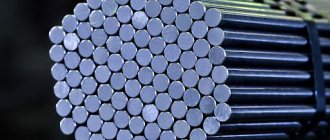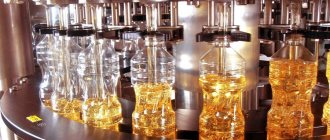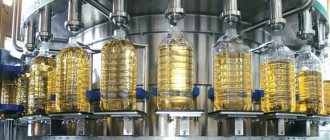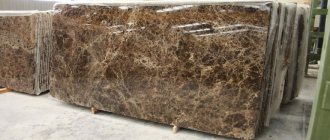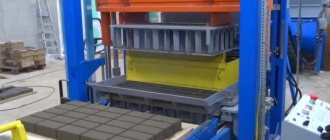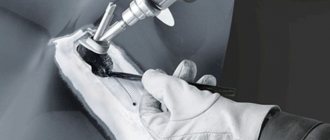Metallurgy is one of the main branches of modern production. It is thanks to it that colossal financial revenues flow into the state budget, because steel and cast iron products, as a rule, are exported and generate foreign exchange earnings for both the plant or plant itself, and the country. There are various metallurgical enterprises, the working cycle of which can be either full or incomplete. But in any case, the final stage of the metallurgical cycle will be the rolling of metal in order to obtain the profile required by the consumer. It is in rolling shops that beams, channels, rails, etc. are produced. The main elements of any rolling mill are the rolling rolls. Metallurgical plants are simply unthinkable without them, so we’ll talk about rollers in detail in this article.
general description
Metal rolling is a rather complex operation, energy-consuming and requiring special skills and knowledge from personnel. The compression of the material, which is carried out by the rolling roll, allows you to achieve certain dimensions of the processed profile. It is important to know that the rolls during their operation take on an impressive force, which arises directly during the operation of the entire rolling line. That is why the rolling roll is the most worn part of any rolling mill.
INTRODUCTION
Mechanical engineering is the most important branch of the national economy, responsible for providing all spheres of human activity with products for various purposes. The task of manufacturing these products not only with high quality indicators, but also with the lowest cost has always been and will be relevant. Metallurgical processing is the first stage in the existence of any industrial products, since at this stage the material is created and undergoes the first stages of shaping, from which parts, components and machines will then be made. And therefore this stage is the most responsible, because this is where future quality is laid.
Continuous casting machines (CCMs) are a modern standard for producing continuously cast billets, which are then further processed. The continuously cast billet is immediately given its primary shape, for which rolling mills are used. PJSC Severstal is a leading Russian manufacturer of sheet and shaped products. In order to ensure high quality of rolled products, high-quality tools are also required, which in rolling are rolling rollers and rolls. Their peculiarity is their significant overall dimensions and weight, which leads to the need to solve additional problems related to the organization and technology of production.
The final qualifying work examines the production of one of the types of rolling shafts in the mechanical repair shop (RMS) No. 1 of Severstal PJSC.
Components and characteristics
All mill rolls have three main components, including:
- Roll barrel. It is she who is in direct contact with the hot and processed metal. A barrel has two main linear parameters - length (L) and diameter (ØD).
- Necks (supporting parts) are located on the sides of the barrel and rest on the roller bearings. Also characterized by length and diameter.
- Drive end.
For a roller section mill, the main indicators are: nominal diameter, collar diameter and working diameter. In cases where the rolling roll is used for rotation using a universal-type spindle, its drive end will have the shape of a blade or cylinder. The drive end will have the appearance of a cross if rotation of the roll using a club is provided (an intermediate coupling is required).
Claim
1. A method for manufacturing composite support rolls for rolling metals between at least one pair of rolls, including calculating the roll in accordance with the expected rolling load and taking into account the equipment on which it will work, manufacturing at least one main part (1) and at least one end part (2, 3) of the roll, wherein at least one of said parts is produced by casting and/or forging, detection of defects in the structure of the roll, removal of central defects in the main part (1) of the roll by making an axial central channel, size which is selected in accordance with the size and position of the detected defects, if necessary, removing the central defects in the end part (2, 3) by making an axial central channel, the size of which is selected in accordance with the size and position of the detected defects, and forming a support roll by axially connecting the parts ( 1, 2, 3).
2. The method according to claim 1, characterized in that the channel in the main part (1) is made with a diameter of 0.5-1.5, preferably 0.8-1, of the smallest outer diameter of the end part (2, 3).
3. Method according to any one of claims 1 or 2, characterized in that the diameter of the channel in each part (1, 2, 3) of the roll is determined individually, taking into account the optimized arrangement of the acting forces in relation to each part of the roll.
4. The method according to any one of claims 1 or 2, characterized in that the axial central channel in the end part of the roll is made with a smaller diameter than the diameter of the channel in the main part.
5. Method according to claim 1, characterized in that the parts (1, 2, 3) are connected by means of a connection (6) corresponding to them in shape, located essentially at right angles to the axis of the roll.
6. Method according to claim 1, characterized in that at least one part (1, 2, 3) of the roller is provided with a channel, the diameter of which varies in the axial direction.
7. Method according to any one of claims 5 or 6, characterized in that the connections (6) are located outside the bearing surface for the roll bearings (7) on the roll neck.
8. Method according to claim 1, characterized in that the connections (6) are located directly outside the roll barrel (8) formed by the main part (1).
Rolls for sheet metal
Sheet rolling rolls, the production of which is a rather labor-intensive process, roll strips and strips. The barrel of such rolls is smooth and made in a cylindrical shape.
Sectional rolls are used for the production of shaped material, which can have either a round or square cross-section (I-beams, angles).
The barrels of the rolling rolls are made slightly convex if they are intended for cold rolling of thin sheets. In other cases, for hot rolling, the roll barrel is given a concave shape. This is done because as the metal moves along the roll, the barrel will heat up and straighten.
Rolls for long products
The barrel of such rolls has special recesses (streams) that repeat the profile of the metal that is subsequently rolled. The strands of a pair of rollers, when connected to each other, form a caliber. The barrel length of section rolls depends on the width of the billet being rolled and calibration conditions.
Graded rolls are characterized by the nominal diameter and length of the barrel. If the mill has many stands and rolls of different diameters, then the diameter of the finishing stand rolls will be dominant.
According to their purpose, sectional rolls are divided as follows:
- For heavy crimping machines.
- For large-section and rail and beam mills.
- For medium-grade rolled products.
- For small sections.
- For wire mills.
- For stripping mills.
Rolling rolls. Rolls for rolling mills
Rolls for sheet cold rolling lines are divided into working and supporting according to their use. See fig. 4 and 5.
The roll diameter is selected based on calculations made taking into account the product range (its thickness), operating conditions, mechanical properties of rolled products, maximum forces, reductions, and line design.
The length of the PB barrel depends on the width of the strip, sheet, tape.
Drive rollers are usually used to make RVs. In stands where the ratio of barrel length to roll Ø = or > 5:1, and very thin alloy steel strip is rolled, multi-roll units are driven by OB (support rolls). For rolls with rolling bearings, the journals are made stepped. In mills that use plain bearings, the roll journals are usually smooth. To reduce the pressure on the bearings and increase the strength of roll journals operating on PZhT, the journals have a max. Ø, and the transition points from the necks to the barrel are rounded.
In the RV (with barrel Ø >160 mm), through grooves are made along the axis, the so-called axial channels. In larger rolls, these channels in the barrel area become wider chambers. The chambers have a Ø that significantly exceeds the Ø of the inlet openings.
Axial channels help cool the center of the roll during hardening. Such additional cooling of the reactor during the operation of the line creates a stable thermal regime, thus increasing the durability of the roll.
Support rolls can be solid forged (as in Fig. 3 and 4), cast, or banded (see Fig. 5). Particularly stringent requirements are imposed on the quality of preparation of chemical agents. The beating of the OB barrel relative to the journals that occurs during operation leads to variations in the thickness of the rolled strip. Max. the permissible runout of the roll barrel Ø1500 mm will be equal to 0.03 mm.
For cold rolling units, rolls are made of high-quality steels, which contain a low content of harmful components S and P. Along with mechanical. The properties of steel after heat treatment are assessed by technological characteristics - hardenability, tendency to overheat, sensitivity to deformation during hardening, workability, grindability, etc.
The most important characteristics for steels used for the production of rolls are hardness and hardenability. The hardness of grade 9X steel in the hardened state reaches 100 units. according to Shore.
RV of multi-roll rolling lines is produced from steels 9Х and 9Х2. Abroad, tool, medium-alloy and high-speed steels are used for this purpose. The hardness of the working surface after heat treatment reaches HRC 61-66.
Recent technologies increasingly refer to radioactive materials made from metal-ceramic hard alloys (their basis is tungsten carbide). The production of rolls from hard alloys is usually based on hot pressing or sintering of plasticized workpieces. The amount of cobalt powder is taken to be 8-15% (the remaining component is tungsten carbide).
Carbide rolls, compared to rolls made of alloy steel, are more wear-resistant. Their resistance to wear is 30-50 times higher. When rolling they can obtain max. roughness on the surface of the rolled material.
They are made whole and composite. As a rule, solid metal-ceramic rolls are used as the RM of multi-roll rolling lines. When designing carbide rolls, certain ratios of neck Ø to barrel Ø (≥ 0.6) and barrel Ø and length (≤ 4) are taken into account.
The main disadvantage of metal-ceramic rolls is their increased fragility, which excludes the possibility of using them under shocks, impacts, and large deflections. When loading them into the stand, it is necessary to completely eliminate distortions that affect the quality of the rolled material. OBs for cold rolling lines are usually made of steel grades 9X2, 9XF, 75ХМ, 65ХНМ. Recently, grade 75XM steel has been most widely used for solid forged OBs.
Steel grades 40ХНМА, 55Х, 50ХГ and steel 70 are used for the production of composite (banded) OB axles (small and medium). For the manufacture of large OB axles of heavily loaded mills, steel grades 45XHB and 45XHM are used.
Steels 9Х, 9ХФ, 75ХН, 9Х2, 9Х2Ф and 9Х2В are used for the manufacture of composite OB tires. The hardness of the bandage surface after final heat treatment is 60–85 units. according to Shore.
It is advisable to use cast OBs; they are cheaper than forged ones and have significantly greater wear resistance. Large cast support rolls are made from chromium-nickel-molybdenum and chromium-manganese-molybdenum steels. For example, OB is made from steel type 65ХНМЛ. After heat treatment, they have a hardness of 45-60 units. according to Shore.
The OB of multi-roll mills is made of tool steel. It contains 1.5% C and 12% Cr. Their hardness after heat treatment is HRC 56-62.
Centrifugal casting
Modern production of rolling rolls involves centrifugal casting as one of the main methods. This method is very expensive, but it fully allows for maximum compaction of the metal structure of the outer surface, which is the working surface of the roll. This approach can significantly increase the service life of the product.
For this method, a special machine is used that has a horizontal axis of rotation of the centrifugal casting mold. The form itself is mounted on support rollers. The drive rollers are mounted in such a way that they fully synchronize the rotation process. The safety roller located at the top has a gap relative to the rim itself. To absorb vibration, there are damping pads between the rollers and the hub. Reducing the level of vibration and shape fluctuations reduces the likelihood of getting defective to zero.
Rolls are cast by the centrifugal method from high-alloy cast iron. Metal is poured into a chill mold rotating around its vertical axis, the volume of which is within 95% of the total volume of the working layer of the rolling roll.
The undeniable advantages of centrifugal casting are:
- Ensuring high windrow density.
- Increasing wear resistance of the roll.
- Absence of shells, voids, non-metallic inclusions, slag.
mtomd.info
When high strength and ductility are required, billets from long or special rolled products are used. During the rolling process, cast billets are subjected to repeated compression in the rolls of rolling mills, as a result of which the density of the material increases due to the healing of casting defects, porosity, and microcracks. This gives rolled products high strength and tightness despite their small thickness.
Rolling methods and methods
There are three main methods of rolling, which have a certain difference in the nature of the deformation: longitudinal, transverse, transverse - helical.
Figure 1 - Rolling methods
a – longitudinal; b – transverse; c – transverse helical
During longitudinal rolling, deformation occurs between rolls rotating in different directions (Figure 1, position a). The workpiece is pulled into the gap between the rolls due to frictional forces. About 90% of rolled products are produced using this method: all sheet and profile rolled products.
Transverse rolling (Figure 1, position b). The axes of the rolling rolls and the body being processed are parallel or intersect at a slight angle. Both rolls rotate in the same direction, and the round workpiece rotates in the opposite direction. During transverse rolling, the body being processed is held in the rolls using a special device. Compressing the workpiece in diameter and giving it the required cross-sectional shape is ensured by profiling the rolls and changing the distance between them. This method produces special periodic profiles, products representing bodies of rotation - balls, axles, gears.
Transverse - helical rolling (Figure 1, position c). Rollers rotating in one direction are installed at an angle to each other. The rolled metal also receives translational motion. As a result of the addition of these movements, each point of the workpiece moves along a helical line. Used to produce hollow pipe blanks.
Rolling rolls. Types of rolls.
Rolling rolls are used as rolling tools, the design of which is shown in Figure 2. Depending on the profile being rolled, the rolls can be smooth (Figure 2, position a), used for rolling sheets, strips, etc. and calibrated (stream) (Figure 2, position b) to produce long products.
A stream is a profile on the side surface of a roll. The spaces between streams are called piles. The combination of two streams forms a cavity called a caliber; each pair of rolls forms several calibers. A system of sequential gauges that ensures the required profile of given dimensions is called calibration.
Figure 2 - Rolling rolls
a – smooth; b – calibrated
The rolls consist of a working part - barrel 1, necks 2 and clubs 3.
The roll necks rotate in bearings, which, at one of the rolls, can be moved by a special pressure mechanism to change the distance between the rolls and regulate the relative position of the axes.
The club is designed to connect the roll to the coupling or spindle.
Roller bearings with a low friction coefficient are used (f = 0.003...0.005), which ensures a long service life.
Forging method
This is the most expensive method of producing rolling rolls, which nevertheless makes it possible to maximally strengthen the entire body of the roll. Thanks to this, reliability and durability are significantly increased.
The forging itself is performed on special automated complexes, designed and manufactured using advanced technologies. The power of these units can be up to 150 MN.
Rolls obtained in this way are most often used in blooming and slab mills, as well as section mills. These steel rolls have an increased coefficient of friction at the moment of contact with the rolled workpiece. This nuance is extremely important for stands with a high degree of reduction.
Forging itself involves the following operations:
- Ingot billeting.
- Draft.
- Broach.
- Forging to the size of the forging.
The processing of rolling rolls after forging involves complex heat treatment, the final stage of which is certainly surface hardening and tempering.
ANALYSIS OF THE STATUS OF THE ISSUE, PURPOSE AND TASKS OF THE WORK
The operating principle of a sheet rolling mill is that a metal bar is rolled between a system of shafts, gradually changing its shape, as shown in Figure 1.1.
Figure 1.1 – Schematic diagram of rolling
Thus, the rolling shaft operates under conditions of increased loads, temperatures and friction, which places high demands on it in terms of strength, hardness, wear resistance and red-hardness. In addition, the shafts must provide a stable workpiece size. Accordingly, the shaft dimensions must be within a fairly tight tolerance.
Due to harsh operating conditions, rolling shafts and rollers are the most popular consumable parts.
VRMC No. 1 of Severstal PJSC has a production site focused on the production of rolling shafts. Currently, processing is performed on universal metal-cutting machines, such as:
— turning screw cutters 16K25 (for parts up to 2000 mm long);
— turning screw cutters 16K40P (for parts up to 6000 mm long);
— radial drilling machine 2M55 (for parts up to 1600 mm long);
— radial drilling machine 2M58-1 (for parts up to 3200 mm long);
— 3M163V cylindrical grinding machine (for parts up to 1400 mm long and grinding diameter up to 280 mm);
— 3M194 cylindrical grinding machine (for parts up to 4000 mm long and grinding diameter up to 560 mm);
— 3M197 cylindrical grinding machine (for parts up to 6000 mm long and grinding diameter up to 800 mm);
- other universal machines.
The main disadvantage of working on these machines is low productivity and lack of versatility. Low productivity is explained by a significant share of auxiliary time during installation and movement of workpieces, as well as a high level of differentiation of operations. To increase productivity under these conditions, it is necessary to enlarge the composition of technological operations, which can only be achieved by using modern CNC machines.
The purpose of the final qualifying work is the design of a section for the mechanical processing of rolling shafts for RMC No. 1 of Severstal PJSC.
To achieve the given goal, the following tasks must be solved:
— development of a conveyor drive for chip removal was carried out;
— a hydraulic drive for shaft loading mechanisms on metal-cutting equipment has been developed;
— a technological process for manufacturing a rolling mill shaft has been developed;
— a cutting tool used in the machining process has been designed.
— the production site was designed.
bearing conveyor chips workpiece
Titanium production
Today Russia is one of those countries that regulate the world market of steel and alloys. Therefore, the country pays the closest attention to the creation of components and parts for metallurgy. In particular, the Magnitogorsk Roll Plant is one of the leaders in the production of these products.
In July 2016, new high-performance crucible induction furnaces were launched at this enterprise. These high-tech units will make it possible to produce complex alloys and reduce the amount of consumed ferroalloys and charge. At the same time, the reduction in electricity consumption will be about 10%. The melting mode can be carried out at a frequency of 250 Hz, and finishing and mixing at a frequency of 125 Hz. Compliance with environmental requirements is also important: harmful emissions from these furnaces will be reduced by 2.6 times.
In general, the Ural enterprise regularly supplies the rolling mill market with its products and is an actively developing enterprise.
Sverdlovsk giant
We also cannot ignore the Kushvinsky Roll Plant. Its products include all types of rollers and tires for them. At the enterprise, rolling mill rolls are produced using such materials for the working layer as:
- Indefinite.
- Indefinite, improved with special carbides.
- High chromium cast iron.
- High chromium steel.
- High speed steel.
The necks and core of sheet metal rolls are made of especially strong cast iron.
Rolls for section rolling mills are produced on the basis of bainitic and pearlitic alloy cast iron with spherical or lamellar graphite.
Banded rolls
BANDED ROLLING ROLLERS TO ENSURE STABILITY OF GEOMETRICAL DIMENSIONS, REDUCING PRODUCTION COSTS AND INCREASING THE QUALITY OF THE SURFACE OF ROLLED ROLLS.
Application of banded (composite) rolls in finishing stands of rolling mills:
- provides increased mill productivity,
- reduces the number of production downtimes for transitions and transfers of rolling stands.
GRINS company designs and manufactures composite rolling rolls in accordance with customer requirements. GREENS provides a full cycle of development and production of rolling rolls - from sketches to tooling and production. In the production of rolling rolls, all stages of technological development, sample testing, quality control and strength analysis of the finished product are observed.
BANDED ROLLERS: HIGH MILL PRODUCTIVITY AT OPTIMUM PRODUCTION COST
The use of banded (composite) rolls makes it possible to use the properties of carbide rings and ensure high rolling output at optimal tool costs.
BANDED ROLLERS: FOR RENTAL OF PERIODIC PROFILE REINFORCEMENT
The use of banded (composite) rolls significantly reduces the time for adjusting caliber parameters, reduces labor costs, increases productivity and improves surface quality.
For hot rolling of reinforcement and smooth profiles, a special grade of hard alloy YGR60 is used.
BANDAGE ROLLERS: PRACTICAL AND RELIABLE DEVICE
Rolled carbide rings of banded rolls are attached to the axles using a locking device with hydraulic nuts. The locking device with oil pumping creates a pressure of 100-200 MPa, and the hydraulic nut creates an axial force with a compression force of 500-1500 kN and thereby secures the carbide rolled rings on the rods. A reliable locking and locking device ensures high performance of composite rolling rings.
MODERN TECHNOLOGIES FOR DESIGN AND DEVELOPMENT OF BANDED ROLLERS
GREENS offers comprehensive solutions for the development, design and reconstruction of rolling rolls and rolling rollers, including the following work:
- design and manufacture of equipment and spare parts,
- production of equipment according to customer drawings,
- production of consumables and wearing parts,
- development of design documentation and drawings of rolling rolls.
Design and modeling of rolls for a section rolling mill is carried out using professional software.
TESTING AND QUALITY CONTROL
Using accumulated practical experience in long-rolling production, GRINS Engineering has developed a comprehensive system for quality control of production and finished products. The system includes control and selection at the level of materials, models and prototypes, followed by operational control during production and final testing of finished products. The technique includes control of all geometric dimensions of the finished rolling roll.
High-tech equipment for monitoring materials and finished products, as well as strict adherence to testing regimes at all stages of production, guarantees consistently high quality of supplied products.
HIGH-TECH PRODUCTION
Banded rolls are manufactured at modern enterprises of the world's leading manufacturers. Production and products are certified according to the international standard ISO9001.
Banded rolls
Ukrainian manufacturers
In Ukraine, there are three main enterprises for the production of rolling rolls: Dnepropetrovsk, Lutuginsky and Novokramatorsk rolling mills.
The Dneprovsky Plant has a wide range of roll production, not only for metallurgy, but also for other industries. Very often, a company works for a specific customer, involving its highly qualified specialists from the technical department to create a variety of drawings and new models of rolls.
Before the start of hostilities in the Donbass in 2014, the Lutuginsky Roll Plant was consistently among the best. Its products were supplied not only to all metallurgical enterprises in Ukraine, but also to many neighboring countries and Europe. However, the military conflict led to the plant being shut down. The company's fixed assets were also damaged. But still, in 2015, we managed to restart the enterprise, and today it has begun to receive orders from the Russian Federation.
Roll quality control
During the production process, absolutely every rolling roll must undergo a technical control procedure for the quality of its manufacture. Particular attention is paid to:
- Chemical composition of the starting material.
- Analysis of the structure of the material of the product (roll).
- Analysis of centricity and geometric dimensions.
- Controlling the degree of hardness of the working layer of the roll.
- Controlling the degree of roughness of the working surface.
- Analysis of the metal structure of the surface layer.
Package
All rolling rolls (the factories that produce them have appropriate quality certificates) are delivered to the consumer in special packaging. These containers are often wooden boxes with partitions, inside of which rolls are placed and securely secured with tension elements. Manufacturers also pay close attention to the packaging container, because poor fastening of the rolls and lack of proper protection of the working and seating surfaces of the industrial product may well lead to negative consequences in terms of the quality of the rolls.
